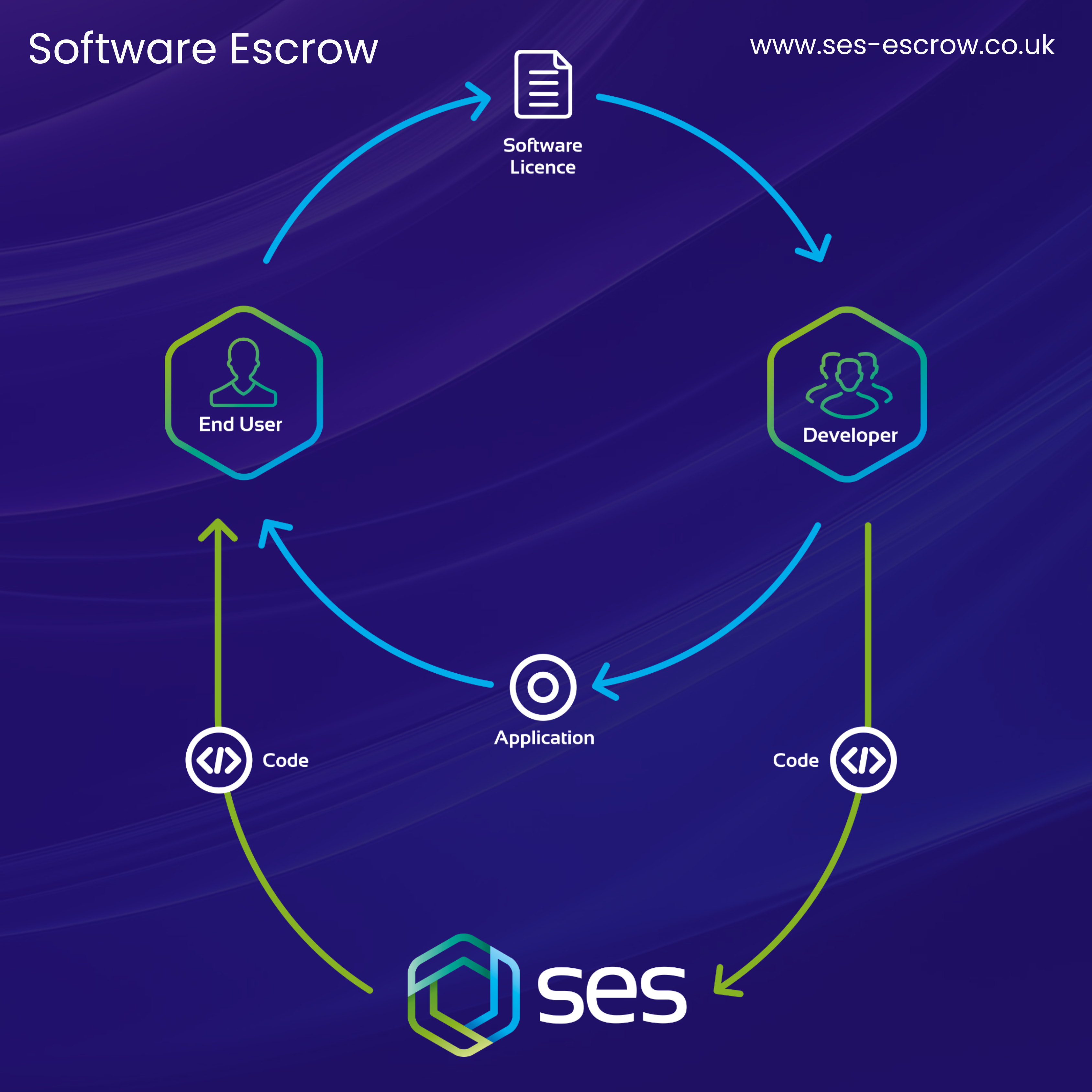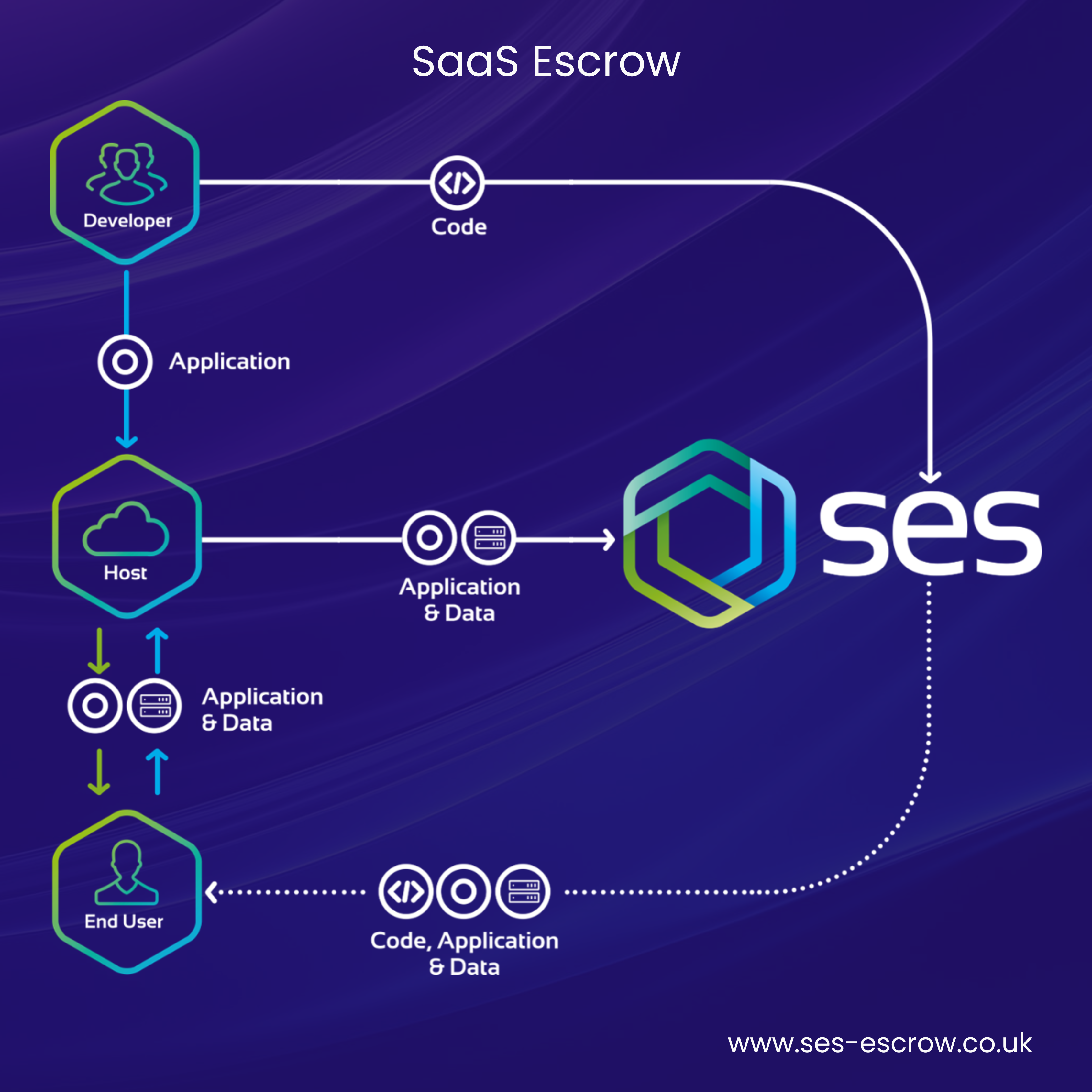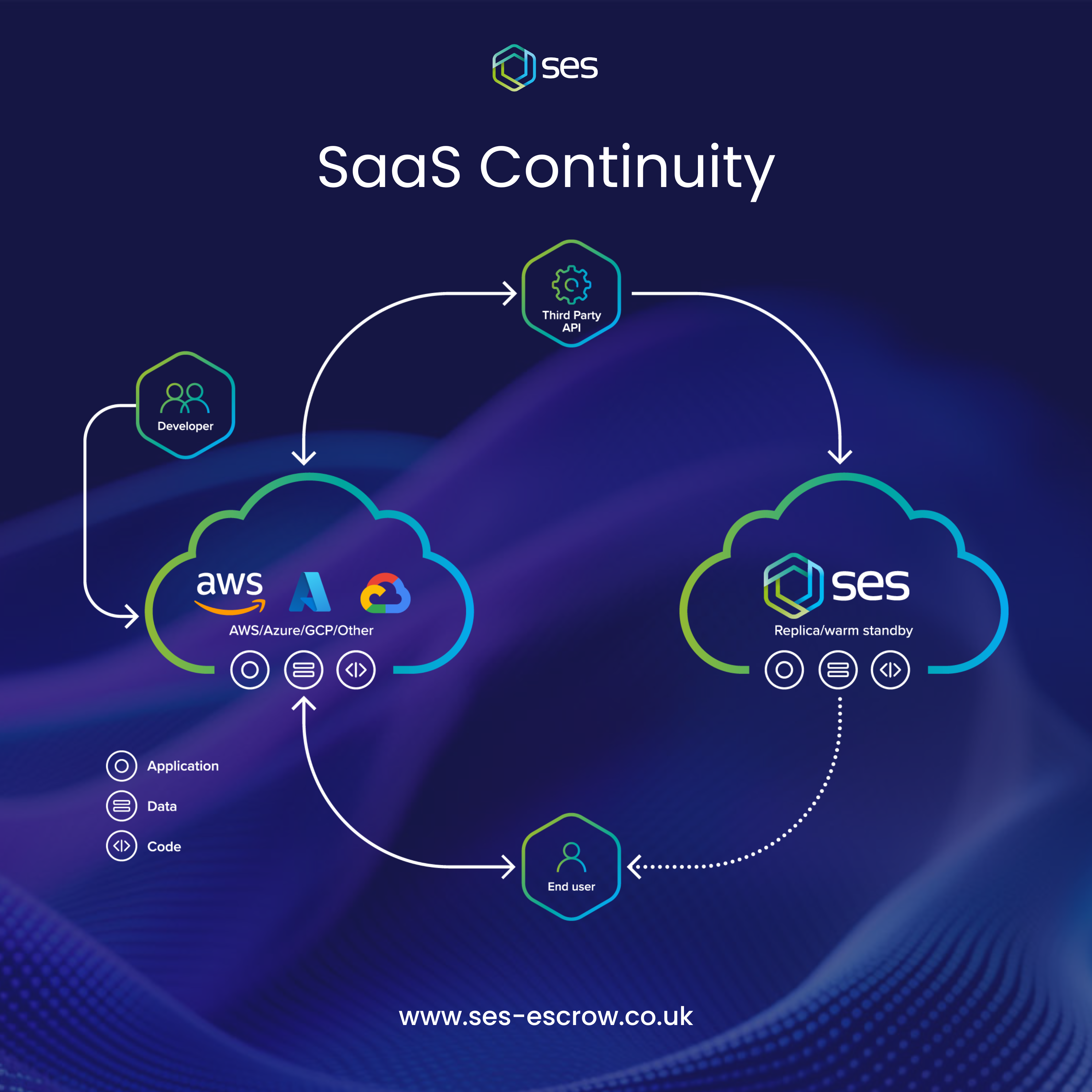Although SaaS Escrow has been around for quite some time, a widespread misconception still persists that SaaS applications can’t be placed in Escrow.
Some assume Software Escrow in the present day is limited to the ‘traditional’ model in which the applications placed in Escrow are installed on-premises. However, as the delivery of software systems has evolved over the years, so have the capabilities of software risk mitigation tools, such as Software Escrow. Alongside ensuring the access and control of applications that are physically installed on-site, Software Escrow can also support the continuity and resilience of cloud-hosted (SaaS) applications! The Escrow model used for protecting SaaS systems is commonly referred to as SaaS Escrow or Cloud Escrow.
How Does Software Escrow for SaaS Applications Work?
Traditional Software Escrow involves an end-user depositing source code and other materials with an Escrow agent. Once these materials are checked to confirm that they are accurate and up to date, they are stored securely by the Escrow agent. The materials are then only released to the end-user when pre-determined release conditions (also known as a trigger conditions) have been met. Common examples of release conditions include a vendor ceasing trade or failing to maintain an adequate service level.

SaaS Escrow works in a similar manner, and like traditional Escrow, it supports the purpose of optimising operational resilience and business continuity, however, there are some key differences:
- A traditional Escrow Solution typically includes source code, build instructions, and documentation. Alongside these components, a SaaS Escrow Solution may additionally include deployment scripts, infrastructure-as-code, data backups, VM/container images, and sometimes cloud credentials.
- SaaS Escrow safeguards software that is hosted and managed by the vendor in the cloud. This makes it more complex due to the need to replicate the hosting environment.
- There is also a difference in the core purpose of the two Solution types; traditional escrow is about code access whilst SaaS Escrow is about service continuity.

Does the SaaS Software Delivery Model Remove Risk?
Interestingly, when it comes to the SaaS software delivery model, it’s widely believed that the risk of vendor failure or disruption is eliminated due to the vendor’s provision of automatic updates and maintenance alongside the absence of on-premises dependency. However, this is not the case, and the following risks are still present:
Vendor Bankruptcy or Acquisition: If a vendor goes out of business or is acquired, the service they provide could be disrupted or even discontinued.
Data Access & Portability: If a vendor locks out their client or fails to provide data exports, their client could lose access to critical information.
Security Breaches: Centralised hosting means a breach could significantly impact many customers.
Lack of Software Escrow/Continuity Planning: Without a SaaS Escrow Solution or an exit strategy, a vendor’s clients are vulnerable in any situation in which the vendor faces disruption (including unforeseen obstacles) or failure.
Ultimately, it’s key to remember that SaaS Escrow is not about mistrust, it’s about proactively addressing and preparing for all situations. In doing so, developers, vendors, and clients can all harness confidence from knowing that a safety net is in place to protect them in the face of unexpected challenges and scenarios.
At SES, we’ve developed a cutting-edge, industry first solution, SaaS Continuity. This disaster recovery service provides the immediate recovery of a SaaS system. Within SaaS Continuity, the responsibility for the recovery process is taken on completely by the expert team at SES. To learn more, check out our blog, ‘SaaS Continuity – Disaster Recovery for Cloud-Hosted Applications’.

Working SES Secure
For over 25 years, SES Secure has been delivering innovative Software Escrow and SaaS Escrow Solutions. Our approach has always placed project personalisation at the forefront. Every solution we craft is carefully catered and tailored to the individual needs, specifications, and preferences of the client.
Additionally, throughout a client’s journey, it’s crucial for our team to clearly communicate all information and updates in a timely manner. We can’t stress how crucial it is that a client properly understands what their solution means for them!
At present, we are the only Escrow provider with over 200 verified client reviews. To give them a read, check out our official Feefo page.
If you have any questions or would like to arrange a chat with our team, please don’t hesitate to get in touch.
New to Software Escrow? Check out our blog, ‘What is Software Escow?’.